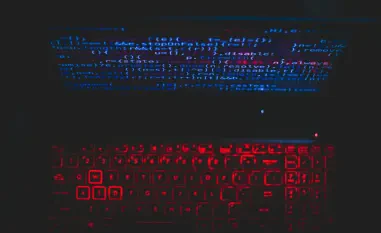In an era where cyber threats evolve at an alarming pace, a familiar menace has resurfaced with a cunning new strategy to infiltrate systems and evade detection, targeting unsuspecting users through compromised platforms. Cybersecurity experts have recently flagged a resurgence of GootLoader, a notorious JavaScript-based malware loader tied to the threat actor Hive0127, also tracked as UNC2565. This sophisticated tool has been spotted employing innovative obfuscation techniques to hide its malicious intent, primarily through compromised WordPress sites. The latest wave of attacks showcases not only the adaptability of this malware but also the growing challenge organizations face in safeguarding their digital environments. With rapid infection timelines and severe consequences like domain controller compromises, the stakes have never been higher for businesses and individuals alike to stay vigilant against such deceptive tactics.
Emerging Tactics in Malware Delivery
Deceptive Font Manipulation for Evasion
One of the standout methods in the latest GootLoader attacks involves a clever use of custom WOFF2 fonts to mask malicious filenames in browsers. This technique relies on glyph substitution, where filenames appear as unreadable strings of characters in source code or when copied, yet render as legitimate-looking names like a PDF guide when viewed in a browser. The trick is powered by a Z85-encoded font file embedded in the page’s JavaScript, effectively fooling users into trusting the file while thwarting static analysis tools. Such ingenuity highlights how attackers prioritize evasion over complexity, crafting methods that slip past automated detection systems with ease. This font-based deception, combined with the exploitation of compromised WordPress sites, represents a significant hurdle for cybersecurity defenses, as it manipulates user perception at a fundamental level, making malicious content appear benign at first glance.
The impact of this font trick extends beyond mere visual deception, as it delays critical detection by security software that relies on static filename analysis. By embedding these custom fonts, GootLoader ensures that even cautious users might overlook the threat, assuming the file is safe based on its rendered name. Additionally, the malware’s delivery through search engine optimization (SEO) poisoning amplifies its reach, luring victims via manipulated search results on engines like Bing. Searches for niche legal or utility terms often lead to these compromised sites hosting malware-laced ZIP archives. This dual approach of visual trickery and strategic search manipulation underscores the meticulous planning behind GootLoader’s campaigns, forcing defenders to rethink how they identify and block such threats in real-time browsing scenarios.
Exploiting ZIP File Structures for Stealth
Another layer of GootLoader’s stealth lies in its manipulation of ZIP file structures to hide its true payload. When analyzed by tools like VirusTotal or standard utilities such as 7-Zip, these archives unpack as harmless .TXT files, giving no immediate indication of danger. However, when opened in Windows File Explorer, they reveal their actual content—a malicious JavaScript file designed to deploy further malware. This discrepancy exploits differences in how systems interpret ZIP contents, buying attackers precious time to execute their objectives before detection kicks in. The simplicity of this tactic belies its effectiveness, as it delays automated scanning processes and allows the malware to establish a foothold on infected systems with minimal interference.
This ZIP file trickery is paired with the deployment of a backdoor known as Supper, also referred to as SocksShell or ZAPCAT, which prioritizes basic functionality wrapped in heavy obfuscation. Featuring techniques like API hammering and custom encryption, Supper enables remote control and SOCKS5 proxying while resisting analysis. The rapid escalation following initial infection, often within hours, shows how these deceptive ZIP files serve as a gateway for broader network compromise. Attackers leverage tools like Windows Remote Management (WinRM) for lateral movement, quickly targeting domain controllers and creating admin-level accounts. This combination of structural deception and swift post-infection action poses a formidable challenge for organizations striving to maintain secure environments against such persistent threats.
Broader Implications and Connections
Links to Ransomware and Cybercriminal Networks
GootLoader’s role in the cybercriminal ecosystem extends far beyond isolated infections, as it often serves as an entry point for more devastating attacks like ransomware. Historical analysis ties this malware to threat actors such as Vanilla Tempest and Storm-0494, who use tools like Supper and remote access software to pave the way for ransomware strains including INC and Rhysida. Additionally, connections to Interlock RAT, also known as NodeSnake, reveal an overlapping network of malicious actors collaborating or sharing resources. This interconnectedness amplifies GootLoader’s threat potential, transforming it from a mere loader into a critical component of a larger attack chain that can cripple organizations with data encryption and extortion demands.
The targeting strategy of GootLoader further illustrates its alignment with broader cybercrime trends, exploiting user trust in familiar platforms and search engines. Earlier campaigns abused Google Ads to redirect users searching for legal templates to malicious WordPress sites, while recent attacks use comment endpoints to deliver XOR-encrypted ZIP payloads with unique keys per file. Such customization adds complexity for defenders attempting to analyze or block these threats systematically. The malware’s ability to adapt its delivery methods while maintaining ties to ransomware operators underscores the urgent need for comprehensive security measures that address not just the initial infection but also the downstream consequences of such breaches.
Balancing Simplicity with Sophistication
A striking aspect of GootLoader’s success is its pragmatic approach, favoring well-obfuscated yet straightforward tools over cutting-edge exploits. Cybersecurity researchers note that the threat actors behind this malware focus on “good enough” solutions that achieve their goals without unnecessary complexity. This balance of simplicity and sophistication, evident in tactics like custom fonts and ZIP file manipulation, reflects a wider trend in malware development where stealth and persistence take precedence over flashy innovation. By honing these practical evasion methods, GootLoader consistently stays ahead of traditional detection mechanisms, challenging the industry to evolve its defensive strategies accordingly.
Looking at the rapid timelines of infection and compromise, often leading to domain controller breaches in under a day, the efficiency of these attackers becomes alarmingly clear. The use of SEO poisoning to lure victims, combined with customized payloads and encrypted delivery mechanisms, paints a picture of a threat that is both calculated and relentless. As GootLoader continues to serve as a gateway for various malicious activities, its impact resonates across the cybersecurity landscape. The lessons learned from tracking this malware emphasize the importance of user awareness, advanced behavioral analysis, and real-time threat intelligence to counter such adaptive adversaries in an ever-shifting digital battlefield.
Final Reflections on a Persistent Threat
Reflecting on the resurgence of GootLoader, it becomes evident that its return marks a significant moment in the ongoing battle against malware, with enhanced obfuscation methods like custom WOFF2 fonts and deceptive ZIP structures playing a pivotal role in bypassing detection. The deployment of payloads such as the Supper backdoor through compromised WordPress sites, alongside rapid post-infection escalation, highlights the acute danger posed to organizations. Connections to ransomware and other threat actors further amplify the malware’s footprint in the cybercriminal world. Moving forward, strengthening detection capabilities with advanced tools that focus on behavioral patterns rather than static signatures offers a promising path. Equally vital is educating users to recognize suspicious search results and file behaviors, ensuring a multi-layered defense against such stealthy and persistent threats.













